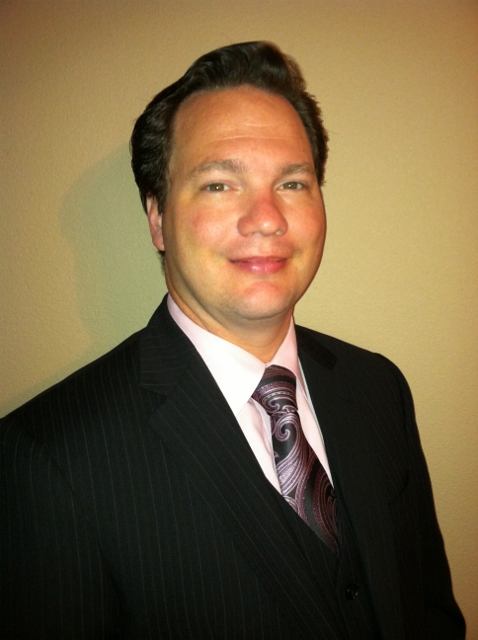In collaboration with CHIME, Becker's Hospital Review's "Life of a Healthcare CIO" series features leading hospital and health system CIOs from across the country who are sharing their experiences, best practices and challenges.
To recommend a CIO to be featured in this series, please contact Helen Gregg (hgregg@beckershealthcare.com).
An interview with Mark Odom, vice president and CIO of St. Bernards Healthcare in Jonesboro, Ark. (Interview has been edited for length and clarity.)
Question: You've been CIO of St. Bernards Healthcare since July 2013, preceded by two stints in IT leadership at other healthcare organizations. Before that, you worked in manufacturing. What lessons or insights were you able to take from manufacturing into your position as CIO?
Mark Odom: It was a big part of my career. I started [Bay Creek Manufacturing] right out of school and ran it for close to 18 years. It was surprising what an excellent platform it was for jumping off into the healthcare world.
[In manufacturing] we've been fighting for cost control for some time, had to learn how to compete. We had to really track the true return on investment, cost of ownership and watch cash flows and capital.
I've been seeing that trend [in healthcare IT] for a couple years now. Five years ago, CIOs' roles were very different from what they are today. I attribute my rapid ascension amongst the healthcare IT ranks to this ability to tie value back and track total cost of ownership and return on investment.
Q: In your time with St. Bernards, what has been your biggest accomplishment?
MO: Here, I think I'm starting to shift the paradigm of what IT is to the organization. [The IT department was] seen as a support tool for the organization, now we're part of looking at how to drive value. There's also been a change in customer service; we were very laid back and we changed that perception by raising the level of customer service to a higher level on a daily basis.
Q: What do you see as your biggest misstep or mistake?
MO: My biggest misstep was getting in here and not truly understanding the culture of St. Bernards. They have a very long history of being successful, but the model has not always been what other hospitals have been doing. So it's about not changing the overlying culture but developing a strategy inside that culture.
Hindsight is 20/20, but I should have realized early on my first strategy was not going to be successful. I spent four months spinning my wheels before I really heard what they wanted to do.
Q: In the past month or so, what project has taken up the majority of your time?
MO: Meaningful use stage 2. It's what it's about now for many of my peers and for our system. We have 10 electronic medical record systems, nine systems in the ambulatory sites and Meditech in the main hospital, and all those need updates to get to meaningful use stage 2. That's the simple part — it's the workflow and process changes that are the real challenges. We have 2,700 employees, and nearly every one will experience some sort of change [with the updates], the EMR is that ubiquitous across the organization.
That's been the big project. We decided to go with a patient portal through a health information exchange because we didn't want to have nine different portals, we wanted one. We elected for a third-party vendor, but building out the HIE while chasing meaningful use at the same time is challenging.
Q: What is the biggest challenge you're facing right now?
MO: Cost pressures. Healthcare is changing and we've got to figure out how to do more with less, and it takes change agents to do that. It's not looking at what we've done; there's a lot of history but it's irrelevant in a world that's moving so quickly. There's also a redefining of what health IT is. [Before] it was the guys that ran the servers; today we need to wear multiple hats.
These pressures will continue, so we have to figure out how to maintain our levels of service with fewer resources. We've done a good job of that here — 1.75 percent of [the organization's] total expenses is a really good number. But even with that we have to continue to look for every opportunity to do more with that money.
With my manufacturing background, I am used to doing a lot with less, and that knowledge is starting to pay dividends.
Q: What is one lesson you've learned during your career that you'd like to share with other CIOs?
MO: It's an eye-opening experience to do a contract review. As you go through your daily business you can see how much things have changed, and even by reviewing simple contracts you often see you're losing a lot of money. We've been able to clean up a lot of what we've discovered. The auto-renew contracts — those are the ones that get you.
It's been a very, very fun 10 months. It's an exciting time to be healthcare. If you're someone who loves a challenge, if that gets you out of bed in the morning, then health IT is for you.
More Articles in the "Life of a Healthcare CIO" Series:
The Life of a Healthcare CIO: Dignity Health's Deanna Wise
The Life of a Healthcare CIO: Seattle Children's Wes Wright
The Life of a Healthcare CIO: Sanford Health's Arlyn Broekhuis

